7 Effective Dog Training Methods – For Old Dogs and New Dogs
7 Effective Dog Training Methods – For Old Dogs and New Dogs
By Christine A. Bournias
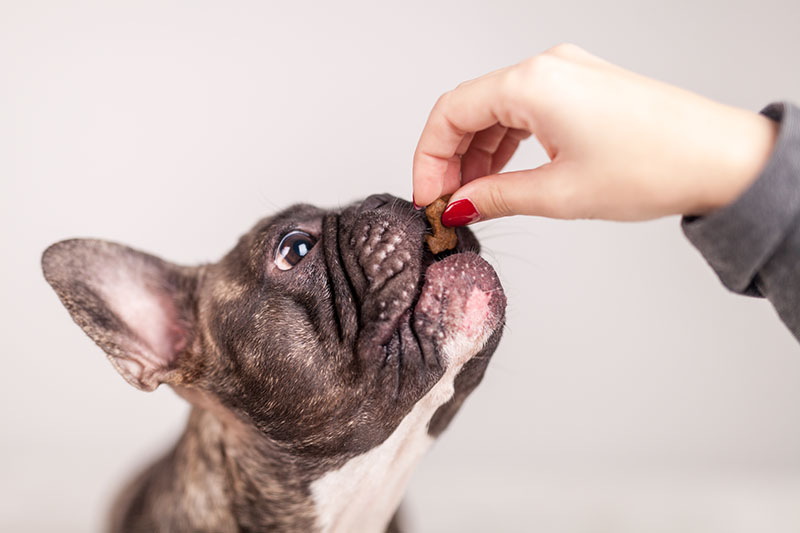
Something New To Think About
Is your furry running partner showing signs of slowing down?
It may be subtle at first, then more evident over time. Yes, your new dog is getting old. You never thought this rambunctious puppy – with an abundant amount of energy – would change. But, with wisdom comes maturity.
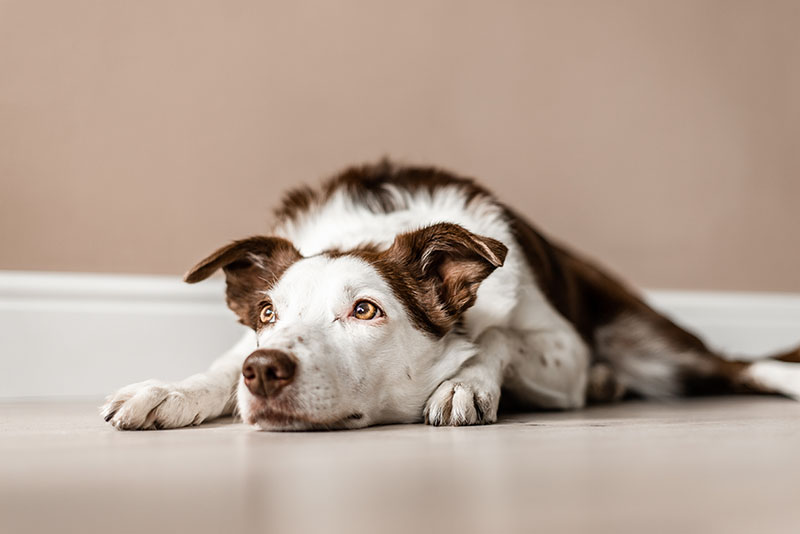
When it comes to learning, there are a few stages of canine growth. While overlapping dog development periods require further research and investigation, pet parents should be familiar with these general stages of puppy life when teaching our dog new tricks:
4 Primary Stages of Puppy Growth And Behavioral Development
According to the PetSmart Services Learning Institute, based on studies based on Dr. John Paul Scott and John Fuller, there are four (4) main periods of canine behavioral development:
Neonatal Period (Birth to 2 Weeks)
Puppies should be with their mother and littermates during this stage, however research shows
that brief, gentle human handling has beneficial effects.
Your puppy is largely reflexive during this period. If they’re touched on the side of their face, your puppy’s reflexive response is to turn and crawl in the direction of the touch. During this life stage, their core body temperature is regulated by their mother and their litter mates.

Transitional Period (2-3 Weeks)
In this stage, puppies transition away from behaviors that are designed to enhance the survival of a newborn. Your puppy will begin to display behaviors that are more adult-like and will discover their feet under them.
During the transitional period, puppies will display increased sensory and locomotor skills, allowing them to gain their maturity. They start to gain independence for toilet behaviors.
Socialization Period (3-12 Weeks)
During this life stage, puppies become fully able to see and hear. Your puppy will begin to form social relationships and attachments to recognized locations. Around twenty (20) days, puppies will exhibit a startle response to sounds.
The socialization period is the most important time in your puppy’s life. Puppies begin to form social relationships, learning opportunities, and attachments to recognized locations. If your puppy is deprived of these critical teachable moments, they may have a tough time relating to other dogs later in life.
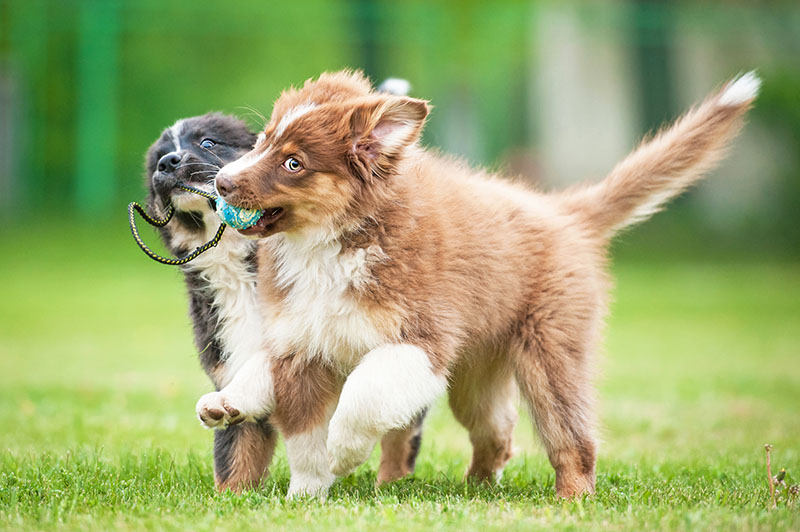
Juvenile Period (12 Weeks to Maturity)
The juvenile period allows puppies to form secondary social relationships—beyond their mother and littermates. In this stage, dogs are said to be “testing the rules”, much like a human teenager. Puppies become self-reliant and independent at this age. They establish dominance order amongst their littermates and display emotional states of fear or anger.
Your puppy is born completely dependent on their mother. At this juvenile stage, puppies begin to learn to make their own way. The human owner becomes less and less the center of the universe. This juvenile period is a terrific opportunity to diffuse your puppy’s fear response and adaptability.
Other canine studies believe that there are more specific dog growth stages. These experts have coined fun names and interesting ways to remember your dog’s development.

Beyond Juvenile Period
Many pet parents believe that dogs close to one (1) year of age or older need no further training or socialization needs. Beyond the juvenile stage, your dog will indeed benefit from training.
An eighteen (18) month dog is still maturing and they need you more than ever. Dedicated time investment with your juvenile plus dog will strengthen your bond together and will help curve undesired behavioral habits. This age is an ideal time to continue to train your dog.
Puppies that were well socialized when they were young could regress. Your dog may become fearful of people or new situations if their training and socialization activities aren’t continued. In fact, young adult dogs between one (1) to two (2) years of age are at greatest risk of being surrendered to shelters.
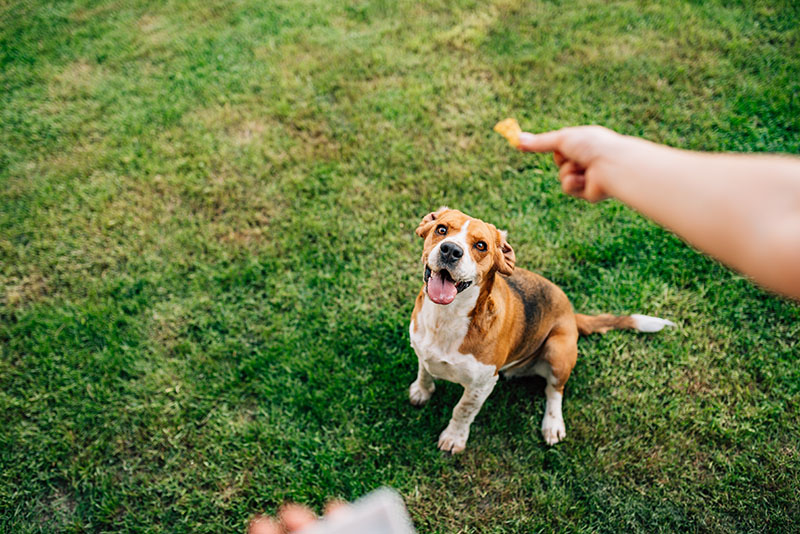
New Ways To Think About Your Aging Pet
Your dog looks at you a bit longer. They hobble and hop with arthritis. Or, they may not hear your commands or see you as well. Be patient with them. Your dog wants to please you and they’re still ready to learn. At any age, all pets long for your attention and deserve mental stimulation.
Also, not all dogs are good at all things. Understand your dog’s type and breed, focus on what your dog is really good at, and recognize that not every dog is going to be good at fetch.
“Everybody is a genius. But if you judge a fish by its ability to climb a tree, it will live its whole life believing that it is stupid.” — Speculated quote by Albert Einstein
Golden Retrievers may be wonderful at heeling close to their owners’ side for loose leash walking, while this breed may be much less impressive at herding a flock of sheep. Herding dogs may not be great lap dogs, but might run circles around a tiny designer dog who lives in an oversized purse.
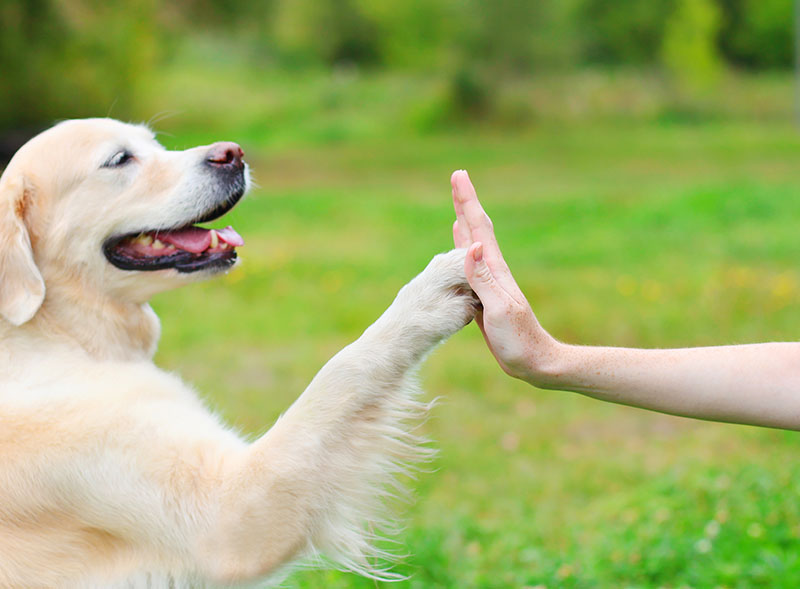
NOTE TO YOU ABOUT YOUR DOG: Discover who they are, find out what they’re good at, and capitalize on those unique skills. Specific canine experts that use interactive games help analyze how your dog sees the world:
“By understanding your dog’s mind, you’ll build a deeper connection with the personality behind the bright eyes that greet you every day.” — Dognition Assessment
But Can You Really Teach Your Old Dog New Tricks?
Yes, you can teach all dogs tricks. New or “old”—we all need to learn. Yes, learning includes our sugar face canine companions too.
Much like us, dogs thrive on mental stimulation throughout their lives. Ongoing dog training, as well as continual pet parent education are ideal ways to educate yourself and nurture the bond between dogs and their caregivers.
Your own dog may not learn like a new puppy at their early life stages, but if you make learning fun, they’ll love the education process. Even if your dog doesn’t master the new task at hand, both you and your dog might enjoy trying!
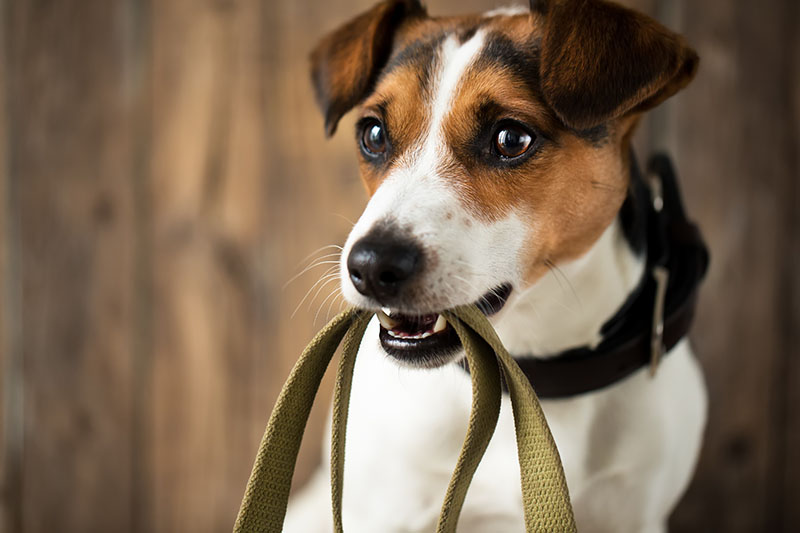
7 New Tips For Old Dogs
1. Time investment
Finding something new to teach your pet takes time. The key is to make time with your dog. Even ten (10) minute bouts a few times a day can make a big difference in your dog’s learning curve, especially when you’re stuck indoors. A simple walk works wonders.
Many pet parents think they have to train their dog for hours at a time, but all your dog really wants are tiny — yet quality — moments of your attention each day.
“Teach them like there’s enough time for both of you.” —Unknown
As humans, we get distracted with family life and work, but you are the center of your pet’s world. The least we can do for them is to carve out a small slice of time — far away from your typical routine of the world.
Make time to play and train your dog. Period.
Nobody said it would be easy — however, time investment will increase trust and help strengthen the bond with your animal.
2. Timing
Dogs live and learn in the moment. Be in that moment. It’s not necessary to repeat a command over and over again. They hear us the first time! (Or, the second time.) When it comes to training, timing is everything.
Quick thinking and rapid response will help your dog learn at their speed. Ask your trusted pet professionals, a dog training expert, or a recognized animal behaviorist for additional advice.
3. Simplicity
Start with basic commands like common “sits” and “stays.” Don’t try to do too much too soon. Simple requests are ideal. Remember: Keep It Simple Sweetheart (K.I.S.S.) Baby steps are key.
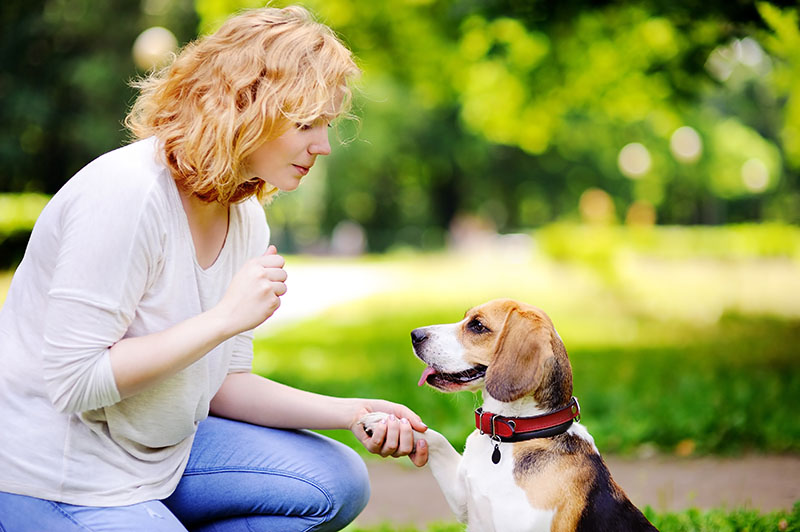
4. Showcasing
Training is not something that happens overnight. Your dog wants to please you. It’s your job to show them how. Show your dog what you want instead of telling them what to do over and over again. Show don’t tell. Be silly with your dog. And, by all means, make it fun.
101 Dog Tricks by Kyra Sundance and Chalcy suggests a trick tip: “Increase your dog’s motivation by varying the consistency, amount, and types of treats. Sometimes, offer a goldfish cracker, sometimes nothing, and sometimes a jackpot of treats!”
5. Shaping
‘Shape’ a desired behavior by working with your dog in steps, known in dog training as ‘shaping.’ Shaping consists of luring, marking, and rewarding success.
Take Small Steps. Teach In Stages. Exercise Patience.
Example: Dance between ankles: Start with your right leg, allow your dog to funnel through your ankle by luring them with a high value reward, like a tiny treat. Mark and reward desired behavior. Repeat with the left leg. Mark and reward desired behavior. Slowly add these two steps together to complete the “dance.” Gradually combine both your right and left leg to complete the entire sequence. Take lots of breaks. Make lots of mistakes. Repeat as necessary. Revert back to something simple like a “sit” often. New tricks take some perseverance, but patience is power.
6. Sequencing
If your dog knows a handful of simple tasks, practice those tricks first. Then add a few tasks and string those tasks together. Putting a series of tricks together transforms into an advanced trick. Add and rearrange as desired.
Celebrate little wins and take a little walk break. Go back to “kindergarten” with basic commands. When you come back to practice, you may find your dog will perform the last thing that you’ve taught them.
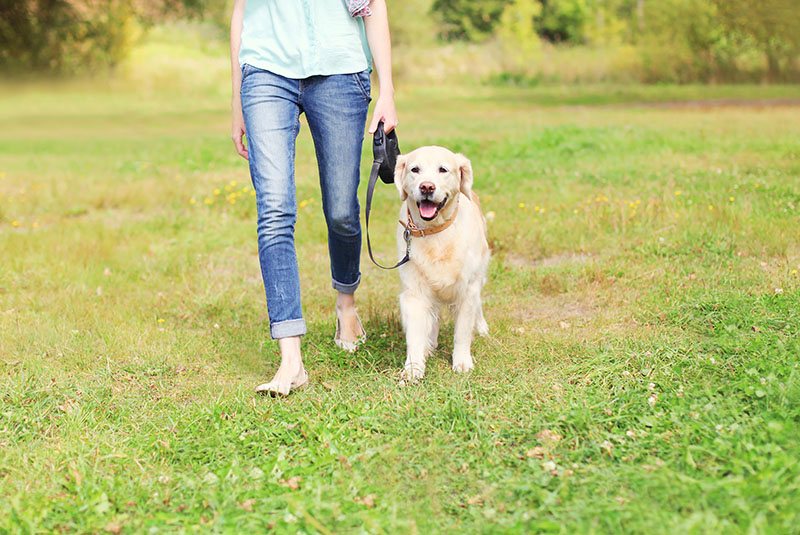
7. Silence
Let your dog think through the commands you give him or her. Be quiet and listen to your dog. Then watch what happens. You might be surprised at their immediate success.
“If you want your dog to learn how to play hoops, get him a basketball net and teach the task in steps. Allow him to touch the net with his nose. Mark and reward. Let him touch the ball. Mark and reward. Combine these two tasks. Repeat several times without saying a word. Then be quiet. Give your dog permission to think it through. Don’t get too enthusiastic too soon. Avoid escalating your excitement voice. You’ll break his chain of thought.” —Craig K. Pet Training Instructor

Not The Same Old Thing
Change is good. Keep things fresh and lively—and have some fun with new “old” things. String a few training staples together and ta-da—something new! Change the order of simple tasks and mix or match:
Fresh Thoughts To Old Tricks
- Wait + Recall + Sit = New Trick!
- Sit + Down + Stay = New Trick!
- Down + Roll Over + Speak = New Trick!
- BackUp+Sit+Stay=NewTrick!
Do Fun Things And Keep The Skip In Their Step
Surprise your dog with something innovative and refreshing. Give them a new perspective on life. Maybe it’s a new toy, a new direction around the block, or a new trick. If your dog has never attended a dog daycare service, now may be a good time to introduce more fun into their daily routine.
Many reputable pet hotels have training classes, play & train options, or individual behavior sessions for puppies and mature dogs alike. Training sessions keep your dog acting like a pup and continue to fine tune their basic obedience skills.
Your dogs may not learn like they used to, but they’ll appreciate your efforts and the time you make for them. Practice learning your dog and love the bond you’re forming with your pooch. You may not be successful at all tricks with your dog, however, you just might enjoy the process and impress them with your efforts. And, that’s all that matter!
● Keep your pet feeling fresh and frisky
● Love on them!
New “Old” Things
Learning is lifetime. Same for your dog. Whether you have a young pup or wise old buddy, your pets deserve your attention. Present to them an abundance of tricks and plenty of interesting things to think about. Give your puppy dog the chance to want to pay attention to you and learn more fun, new things each day!
DID YOU KNOW?
With increased time spent at home, adopting a new member into your family may be the perfect solution to helping your local shelter. If you find yourself indoors more often lately, you may have additional time to devote to your fur friend’s training needs.

For new stuff and other fun things to think about, visit: Best Friends Pet Hotel or call your local hotel.
About The Author:
Christine A. Bournias resides in Michigan with her 2-pack; two new beautiful adopted miracles. As her “Angelwriter”, Nicodemus (1997-2010) is the wisdom behind the stories she shares. Christine champions the magnitude of building the bond between a dog and their person(s) by means of respectful communication and enduring admiration.




